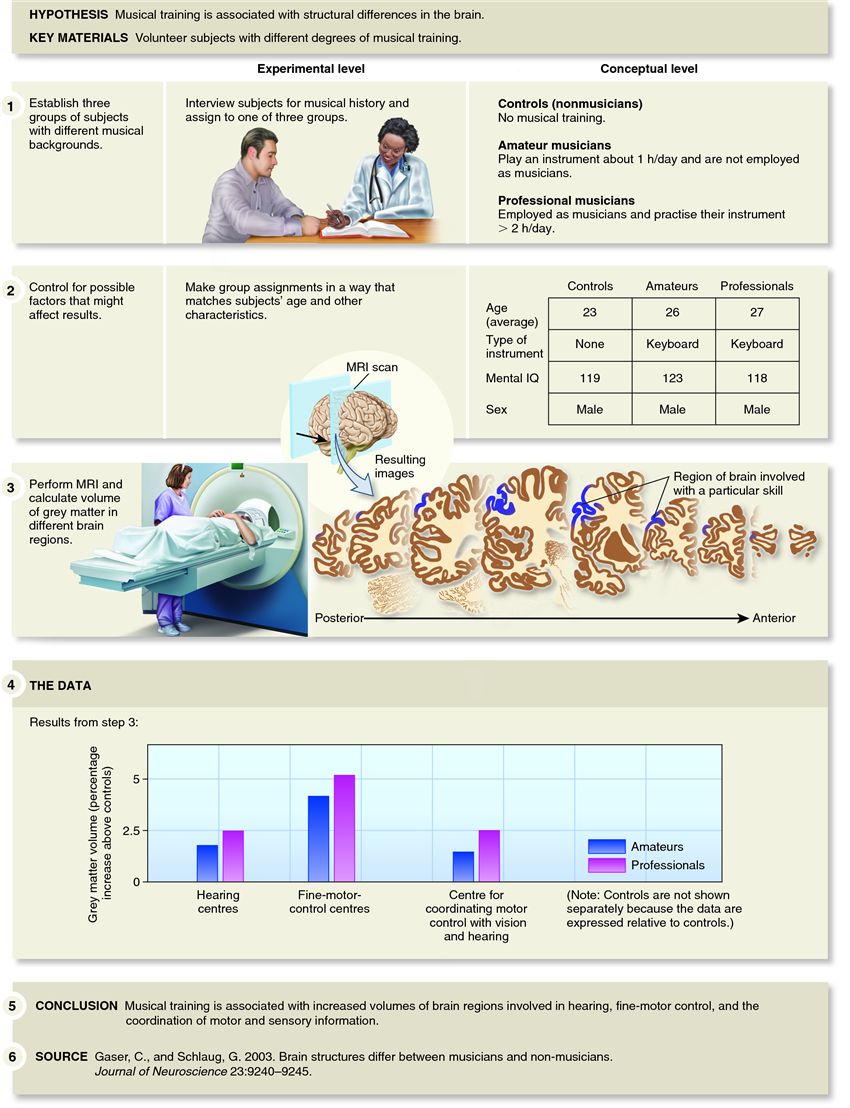 |
| Previous Image | Next Image |
| Description: Gaser and Schlaug Showed That the Sizes of Certain Brain Structures Differ Between Musicians and Nonmusicians MRI and fMRI have been extremely useful in revealing which brain areas are involved in a particular function. They have also shown that the human brain is surprisingly adaptable. A number of studies have been carried out on musicians, because they practise extensively throughout their lives, enabling researchers to study the effects of repeated use on brain function. Christian Gaser and Gottfried Schlaug used MRI to examine the sizes of brain structures in three groups of people: professional musicians, amateur musicians, and nonmusicians. Individuals were assigned to each group based on their reported history of musical training: professional musicians with more than two hours of musical practice time each day, amateur musicians who played a musical instrument regularly but not professionally (practising about one hour each day), and those who had never played a musical instrument on a regular basis. The researchers hypothesized that repeated exposure to musical training would increase the size of brain areas associated with visual, motor, and auditory (hearing) skills, because each of these activities is used to read, make, and interpret music. The results showed that brain areas involved in hearing, moving the fingers, and coordinating movements with vision and hearing were larger in professional musicians than in amateur musicians, and larger in amateurs than in nonmusicians. The region of the brain that controls finger movements appeared particularly well developed in the professional musicians, an interesting finding because all the musicians in this study played keyboard instruments, such as the piano. In a follow-up study published in 2009 by Schlaug and his colleagues from McGill University, Toronto's Hospital for Sick Children, and Boston College, the researchers were able to dismiss the idea that people with increased brain size in these regions were more likely to become musicians. They were able to show that musical training for only 15 months in early childhood (starting at around six years of age) leads to structural brain changes (as measured by MRI and behavioural tests) that diverge from typical brain development in musically relevant regions. No structural brain differences occurred before the musical training, which supports the view that differential development of these brain regions was induced by instrument training and practice, rather than by existing biological predictors of musicality. Picture Stats: Views: 1536 Filesize: 155.51kB Height: 1108 Width: 850 Source: https://biology-forums.com/index.php?action=gallery;sa=view;id=1151 |
